
Grave Images: A musical trip around Philadelphia’s historic cemeteries
Cemeteries are inherently interesting places. That’s true even when nobody of note is buried there. It’s the history, the architecture, the culture and religion, and the overall atmosphere. While some people might think that graveyards are spooky or scary, they are actually quite beautiful in many ways. You can see that in the design of the headstones, in the inscriptions, in the keepsakes left by visiting family and friends. There is also a beauty to the basic idea of honoring the dead.
Philadelphia is absolutely chock full of cemeteries. Not surprising for a city that’s been around for a few hundred years on land that’s been inhabited by the Lenape and other Native Americans for literally thousands of years. According to Find A Grave, a website that is absolutely crucial for this kind of information, there are 208 graveyards in the city and many, many more right outside its limits.
Every cemetery is fascinating and every cemetery has fascinating people buried in it — including many legends of music, from blues to jazz to folk and opera. Go out and explore.
Sister Rosetta Tharpe (1915 – 1973)
Northwood Cemetery
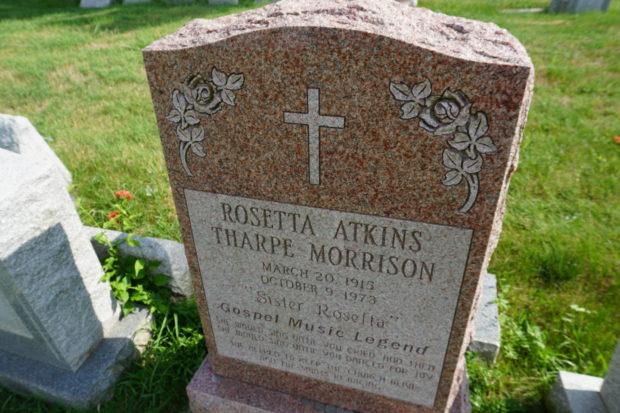
Did you know that Sister Rosetta Tharpe, rock n’ roll originator and absolute badass, is buried in West Oak Lane’s Northwood Cemetery? While her star shines bright today, the guitarist and singer was virtually forgotten for decades after her death in 1973 at just 58 years old. Indeed, it wasn’t until 2008 that a gravestone was put in place. Tharpe was elected to the Rock & Roll Hall of Fame only two years ago, which says a lot more about the organization that runs that museum than it does about her rhythm and blues, jazz, and gospel credentials, which are impeccable.
You can read more about Tharpe in this wonderful essay, watch the 2011 PBS documentary about her, or just sit down and listen to some songs. Remember that she existed in both the gospel world as well as the secular one, something you can definitely hear in all her music.
Bessie Smith (1894 – 1937)
Mount Lawn Cemetery
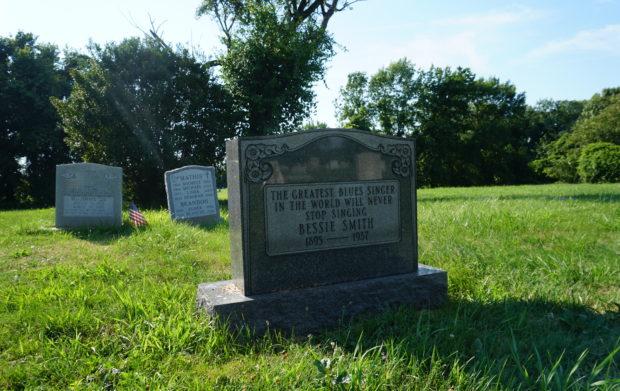
Legendary blues singer Bessie Smith may have been born in Tennessee and died in Mississippi but she is buried right outside of Philadelphia. At the time of her death in 1937 following a horrific multiple car accident she had called Philly home for many years.
The memorial for the 43 year old Smith, known as the “Empress of the Blues” and celebrated for her beautiful voice, was extremely well-attended. While funds were raised for a headstone, they were allegedly pocketed by her estranged husband according to biographers, and she was buried in an unmarked grave in Mount Lawn Cemetery in Sharon Hill.
In August of 1970 Janis Joplin, a huge fan of Smith’s music, helped pay for a tombstone. She split the costs with Juanita Green, a local leader in the Philadelphia NAACP who had met Smith back in the ’30s. The epitaph reads: THE GREATEST BLUES SINGER IN THE WORLD WILL NEVER STOP SINGING.
Read more about Smith in an interview with biographer Chris Albertson, listen to this NPR documentary or watch the HBO movie about her starring Queen Latifah, and also make sure to dig deeper into her role as a queer icon.
Eugene Ormandy (1899 – 1985)
Old Pine Street Presbyterian
Church Cemetery
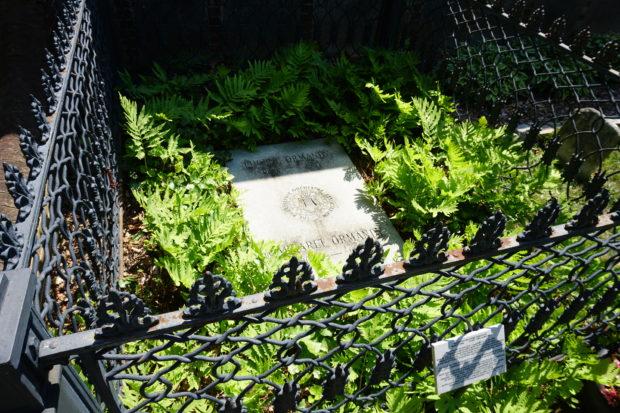
It wasn’t that long ago that classical musicians were rock stars and Eugene Ormandy is proof of that. During his lifetime he won two Grammys, was awarded the Presidential Medal of Freedom, and was even made a Knight Commander of the Order of the British Empire by Queen Elizabeth II back in 1976.
When the longtime conductor of the Philadelphia Orchestra – 44 years at the helm, which is incredible – died in 1985 at the age of 85, then President Ronald Reagan declared his birthday “Eugene Ormandy Appreciation Day.” It was a joint resolution with Congress. Seriously. You can look it up.
Not only that, but here in Philadelphia Ormandy was honored with being buried at Old Pine Street Presbyterian Church Cemetery on 4th St. alongside a whole slew of Revolutionary War soldiers, a signer of the Constitution, and many more historic figures from centuries past. You can read more about the graveyard and how Ormandy and his wife Margaret came to be buried there on the Old Pine Conservancy website.
Jack Rose (1971 – 2009)
West Laurel Hill Cemetery
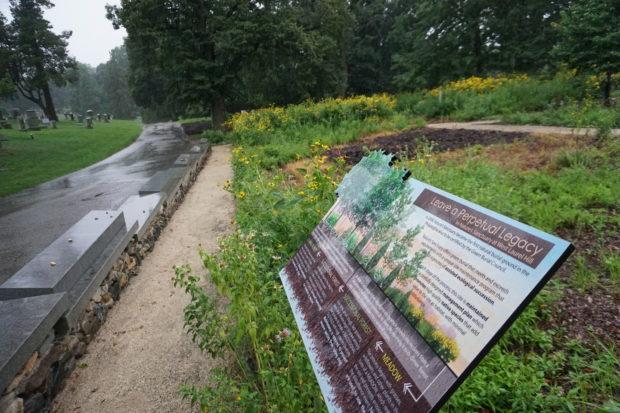
There will never be another one like Jack Rose. He was an absolute force of nature on the guitar, churning out album after album of blues, ragtime, and more. Even BBC DJ John Peel, a legend in his own right, was a big fan. Rose played a Peel Session in 2004.
While Rose was known for his mastery of the 6 and 12 string acoustic and the lap steel, he actually started off in the punk scene as part of the experimental drone band Pelt, which was based out of Richmond, VA in the mid-90s. Rose grew up in nearby Fredericksburg. He moved to Philly in 1998 and was an absolute fixture around the city for the next decade. He passed away following a heart attack in 2008 at only 38 years old.
It feels quite fitting that Rose is buried in the Nature’s Sanctuary, a “green burial” section, at West Laurel Hill Cemetery in Bala Cynwyd. Walking around the trees and other plants that grow on the site is just as much a reminder of the stark beauty of the world as any of his intricate compositions.
Rose’s music is such that there is no bad place to start listening to it. You really can just pick a track at random, crank it up real high, and sit back and enjoy. His album Kensington Blues is a modern classic and watching videos of him playing is just marvelous. You won’t be disappointed.
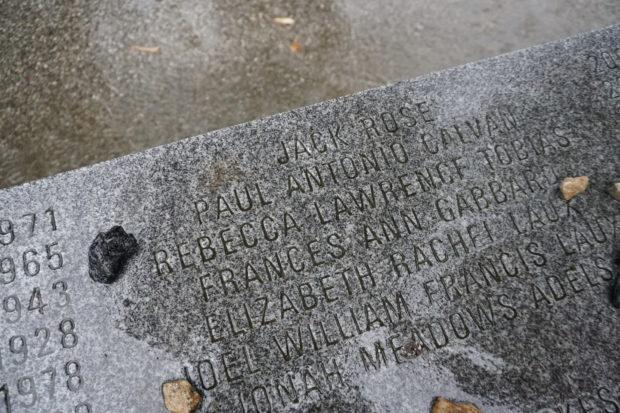
Teddy Pendergrass (1950 – 2010)
West Laurel Hill Cemetery
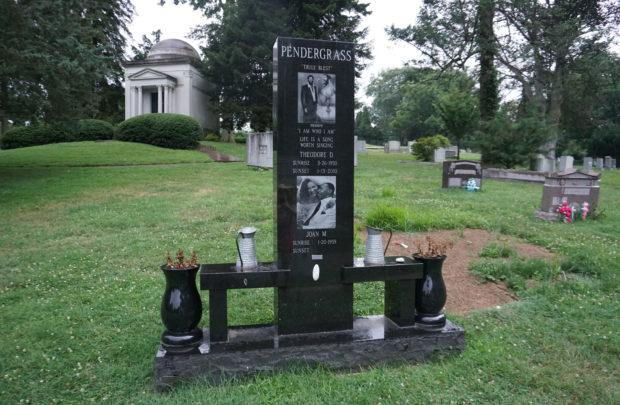
The best way to understand how important Teddy Pendergrass was to Philadelphia and really to the whole world is to watch him at 1985’s Live Aid, the first time the R&B singer had performed since being paralyzed from the chest down in a car accident a couple years prior. The roar of the almost hundred thousand fans at JFK Stadium – and an estimated 1.5 billion watching on TV – when Pendergrass comes out to sing “Reach Out and Touch (Somebody’s Hand)” is one of the greatest moments in Philly history, hands down.
Of course Pendergrass had a long career before and after that iconic concert. He got his break as a member of Harold Melvin & the Blue Notes, a hugely popular soul group who recorded for Kenny Gamble and Leon Huff at Philadelphia International Records throughout the 70s. He left that band in ‘75 for a solo career that lasted until he retired from performing in 2007. He died as a result of respiratory failure in 2010 at 59 years old and is buried at West Laurel Hill in Bala Cynwyd.
Pendergrass was a brilliant and beautiful singer and was wildly successful, with multiple platinum and gold albums. He had a lot of crossover appeal starting in the late 70s and was a total sex symbol. At one point he was even being referred to as the Black Elvis, which is fantastic. A documentary about his life, If You Don’t Know Me – named after one of the most popular Blue Notes songs – was made by the BBC and released in 2018.
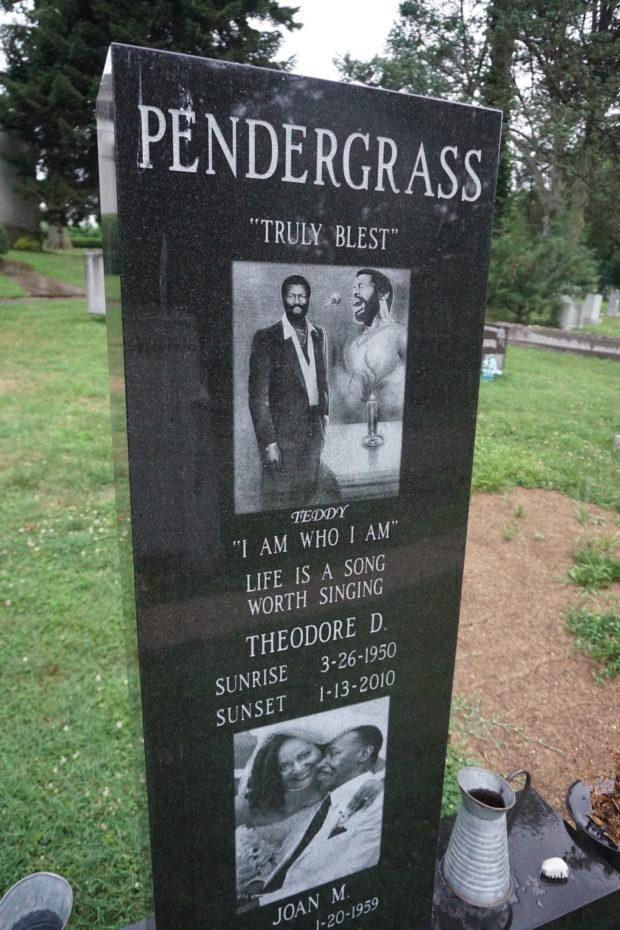
Marian Anderson (1897 – 1993)
Eden Cemetery
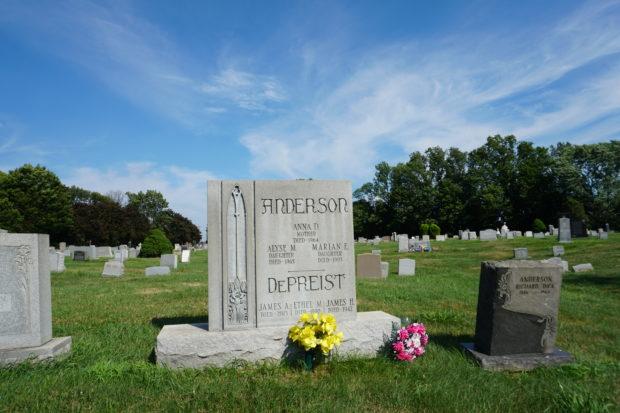
Marian Anderson might have traveled the world as a classical and opera singer but the contralto was the daughter of Philadelphia through and through. She was born in 1897 and grew up in South Philly, learning to sing at the Union Baptist Church at 12th and Bainbridge. As a child and teen she frequently performed at churches and at community events around the city, as detailed in this PhillyMag memorial from a couple years ago.
Due to the abject racism of the time, her options were quite limited, especially when it came to music education. She was denied entry to the University of the Arts – then known as the Philadelphia Music Academy – but found private tutors who heard the promise in her voice.
By 1925 she had moved to New York City and began a career that would take her first around the country and then to Europe, Asia, and South America, allow her the chance to perform in front of tens of thousands at the Lincoln Memorial in 1939, play for presidents and royalty, record countless albums, and more. She received numerous great honors during her life including a Presidential Medal of Freedom in ‘63, a Congressional Gold Medal in ‘77, the National Medal of Arts in ‘86, and a Grammy Lifetime Achievement Award in ‘91.
It would be impossible to try and summarize all of Anderson’s accomplishments in just a few short sentences because she did so much over her 96 years on this planet. There’s even an award named after her! Each year the Kimmel Center “honors critically acclaimed artists who have impacted society in a positive way” with the Marian Anderson Award. Previous recipients have included Betty Allen, Ossie Davis, Denyce Graves, Florence Quivar, and many others.
Anderson died in 1993 and is buried at Eden Cemetery in Collingdale, right outside of the city, one of the oldest African-American graveyards in the country. Her old home in Center City has been transformed into a museum all about her life.
Charles Albert Tindley (1851 – 1933)
Eden Cemetery
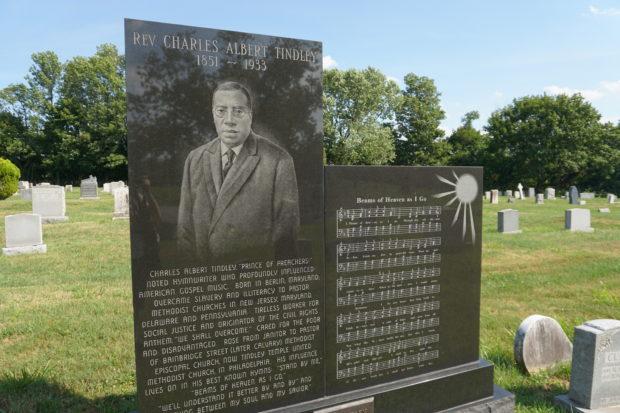
While Charles Albert Tindley is best known as the composer of the classic gospel hymns “What Are They Doing in Heaven?” and “I’ll Overcome Someday” – the latter considered to be the basis for the civil rights era protest song “We Shall Overcome” – he was so much more than that.
Born in eastern Maryland in 1851, the son of a slave and a freedwoman, Tindley moved to Philadelphia some time after the Civil War ended in 1865. He took on the role of sexton – basically a custodian – at the John Wesley Methodist Episcopal Church on Bainbridge. While he did not have much of a formal education up until that point, he was by all accounts quite brilliant and decided to attend night school and take correspondence courses on religion, including one on New Testament Greek. He also learned Hebrew after asking a rabbi at a nearby synagogue to tutor him.
Tindley was ordained in 1887, became an elder in 1889, and in 1902 was named pastor of that same church where he was once a janitor. The congregation moved to Broad and Fitzwater a few years later and rapidly expanded, numbering in the thousands according to a Christian Broadcasting Network history. In its heyday the Tindley Temple, as it came to be known, was a vibrant church with a multi-racial membership of at least 10,000 people. Tindley was known as the “Prince of Preachers” and is widely credited as one of the founding fathers of modern gospel music.
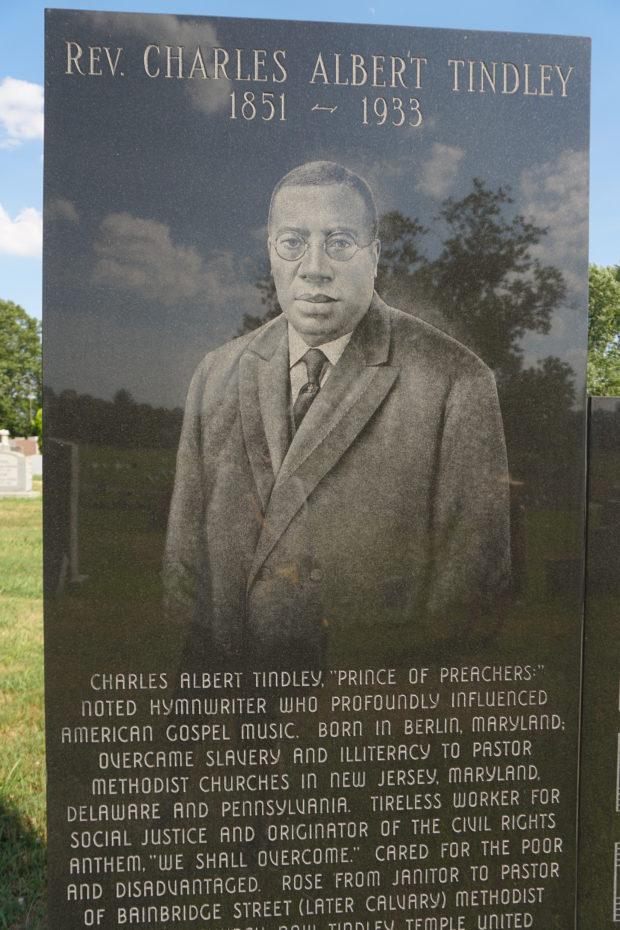
It’s no surprise that music was a huge part of the church. That was a direct reflection of Tindley and his talents as a songwriter and preacher. Last year the United Methodist Church made a short film about the Tindley Temple that you can view online and in it one of the current members talked about how, “We are known for three things — good music, good preaching and good food. We have some of the best preachers you ever want to hear.” While Tindley may have passed away in 1933 at the age of 82, it seems like he left his legacy in very good hands.
The Rev. Dr. Charles Albert Tindley is buried in Eden Cemetery. Although his grave was unmarked for decades due to the church not having the funds for a proper headstone at the time of his death, a large monument was put up in 2002 with not just a striking portrait of Tindley but also the notation for the hymn “Beams of Heaven As I Go” and a history of his life.
Benjamin Carr (1768 – 1831)
Saint Peter’s Episcopal Churchyard
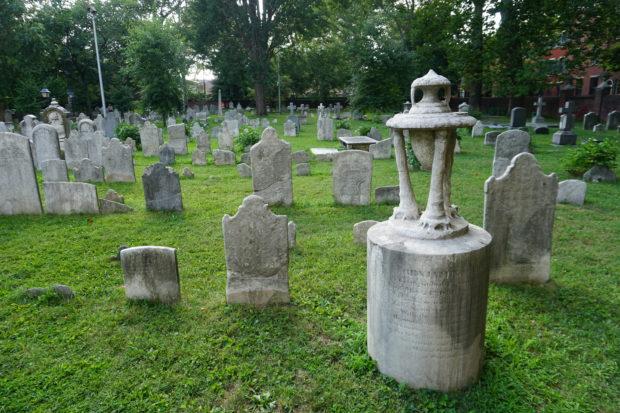
A lot of people like to claim that they were the originators, the innovators, that they figured it out before anyone else. Whatever it is, Benjamin Carr probably has you beat cause he was being called the “Father of Philadelphia Music” more than two hundred years ago.
Carr was born in London in 1768 and emigrated to Philly in 1793, opening a music store and quickly establishing himself in the city’s burgeoning cultural community. He had studied organ and composition when he was younger and was involved in the Carr family business of music publishing. His father and younger brother followed him to the States and ended up in Baltimore, where they founded a very successful publishing company.
After a couple years spent in New York City – a rite of passage, even back then – Benjamin Carr returned to Philly. He was a noted performer, the organist at a number of different churches around the city, composed, and even taught music. He was also one of the founders of the Musical Fund Society, an organization that exists to this day.
Carr died in 1831 and is buried at Saint Peter’s Episcopal Churchyard at 4th and Pine. The inscription on the monument by his grave reads:
Charitable,
without ostentation,
faithful and true in his friendships,
with the intelligence of a man
he united the simplicity
of a child.
In testimony, of the high esteem in which he
was
held, this monument is erected
by his friends and associates of
the
Musical Fund Society
of Philadelphia.
There is not a lot online about Carr but the University of Pennsylvania Library system does have a history and a collection of the sheet music for some of his songs in the Keffer Collection of Music Manuscripts.
Yuzo Iwata (1959 – 2018)
Woodlands Cemetery
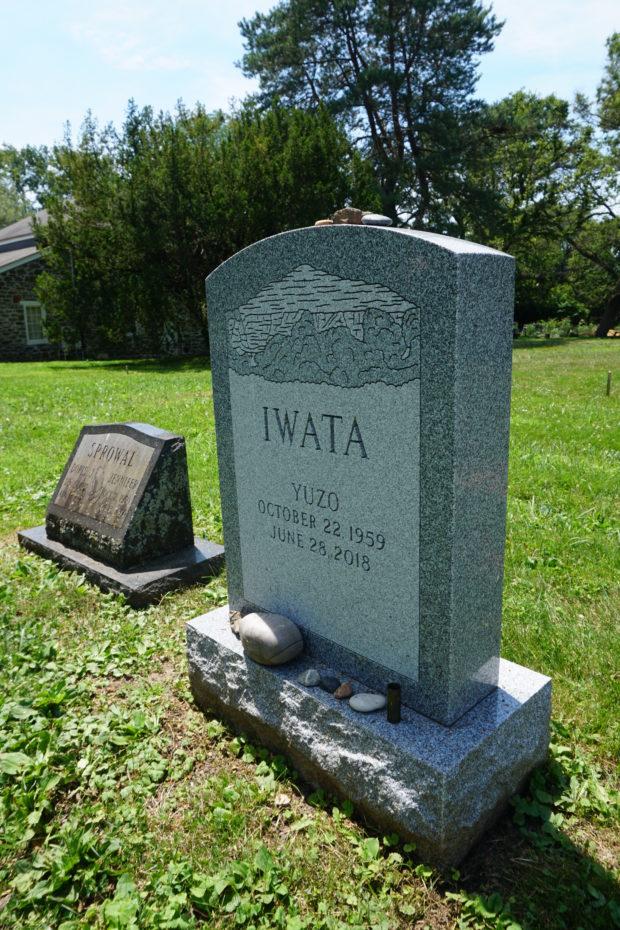
In 2018 when psych guitarist Yuzo Iwata was dying from kidney cancer, he made the decision to sell off his record collection and use the money to purchase a family plot in Woodlands Cemetery near his West Philly home. As you can probably guess, this wasn’t just any record collection.
Iwata was born and raised in Japan, though he spent more than half of his 58 years here in Philadelphia. He was a huge, huge jazz nerd and his record library was beyond incredible. It must have been because he was able to lure two agents from the renowned Disk Union shop in Tokyo to get on a plane and buy his whole collection for cash. The next day he walked down to the Woodlands and paid for a plot he and his wife Jessie previously picked out.
In a memorial published in The Key last year, friend and musical collaborator Zachery Sulat said that he was initially shocked when Iwata told him he had sold all his records “but then he started talking about it and I was, like, ‘Oh, you’re bragging!’” It wasn’t just helping out his family that was important for him; he also wanted to choose the spot where he would be eternally at rest. Well, spots: Iwata was cremated and he requested that half his ashes be scattered from the top of Mount Bukō, near his hometown of Chichibu. The mountain is pictured on his gravestone.
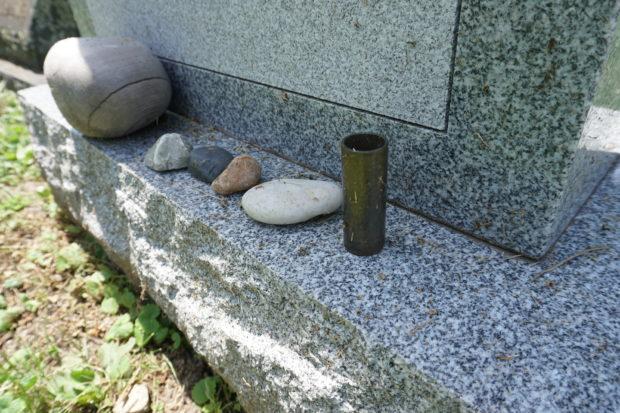
According to Jessie Iwata, Yuzo thought of the Woodlands as, “a good place for us to have in our lives.” She explained that he wanted to be buried somewhere that wasn’t just convenient but also a spot where family and friends could “find peace and connection” when they came to visit. “It’s a way for somebody like Yuzo, who very much has two places to be, to really be part of Philadelphia and this neighborhood,” she added.
Considering that Woodlands Cemetery serves as a park with people hanging out and exercising and also hosts a multitude of community events during non-quarantine times – craft fairs, concerts, and more – that makes total sense.
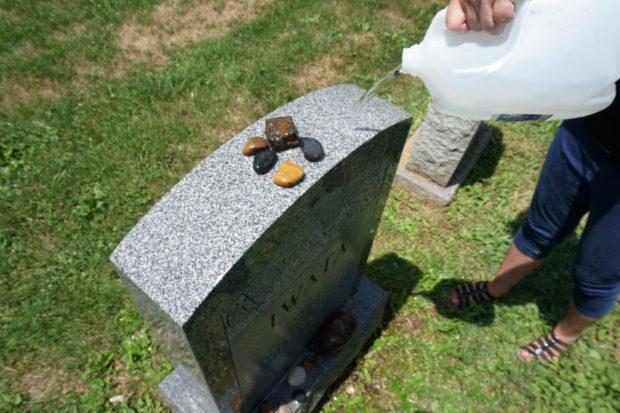
Jessie Iwata was at the cemetery to visit Yuzo’s grave and wash off his headstone. She told The Key that the pandemic has definitely changed how she views the Woodlands: “When you’re walking in [the cemetery] and you’re in the open space it feels a little different than if you’re walking on the street and trying to keep distance. Because you know that everyone is here for some kind of purpose – of pleasure or mourning – so you feel a little more rapport with the other people. It’s really nice.”
No matter what’s going on in the world, she said that being at Yuzo’s grave is very comforting to her. She told The Key that when she’s there she’s not just thinking about their decades together in Philadelphia but also about his life in Japan. “It’s just earth and water that’s separating me from Chichibu,” she explained. “When I look at the sky [over his grave] it feels very connected.”
Acknowledgments:
I could not have done this project without the help of a ton of people. Thanks to Dana K. for driving me to the suburbs and traipsing through the brush, to the fine nerds from the @corpse_altar Instagram account for inspiration and advice (follow them now!), to Josh Pincus from joshpincusiscrying.com for documenting his own adventures, and to everyone else who had a great answer when I asked for their favorite musician graves in the city. Sorry I wasn’t able to get to all of them but maybe next time!